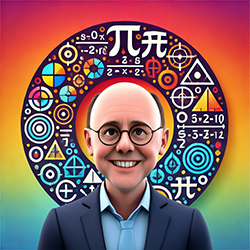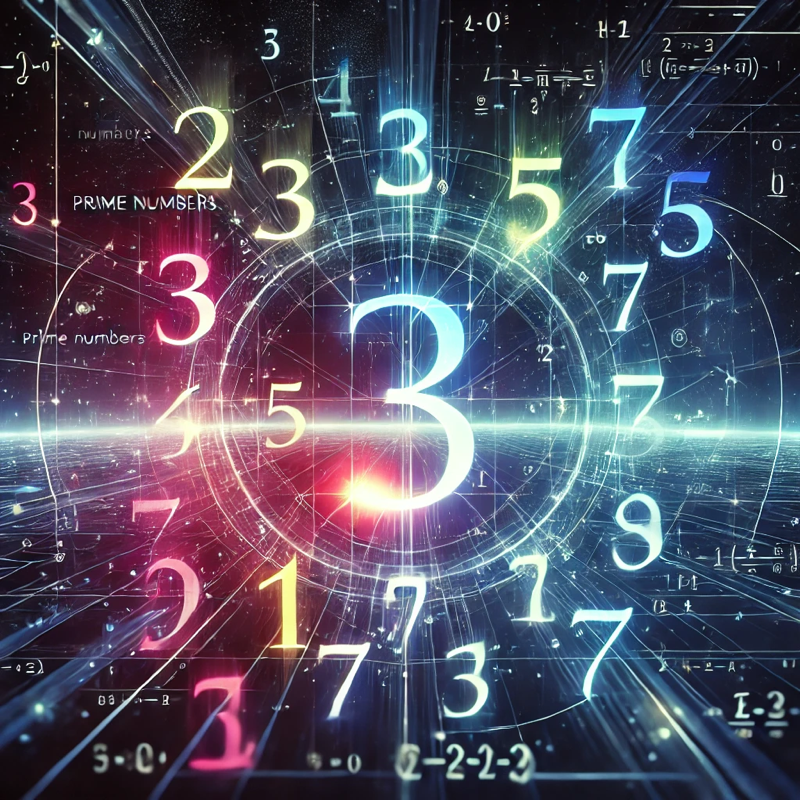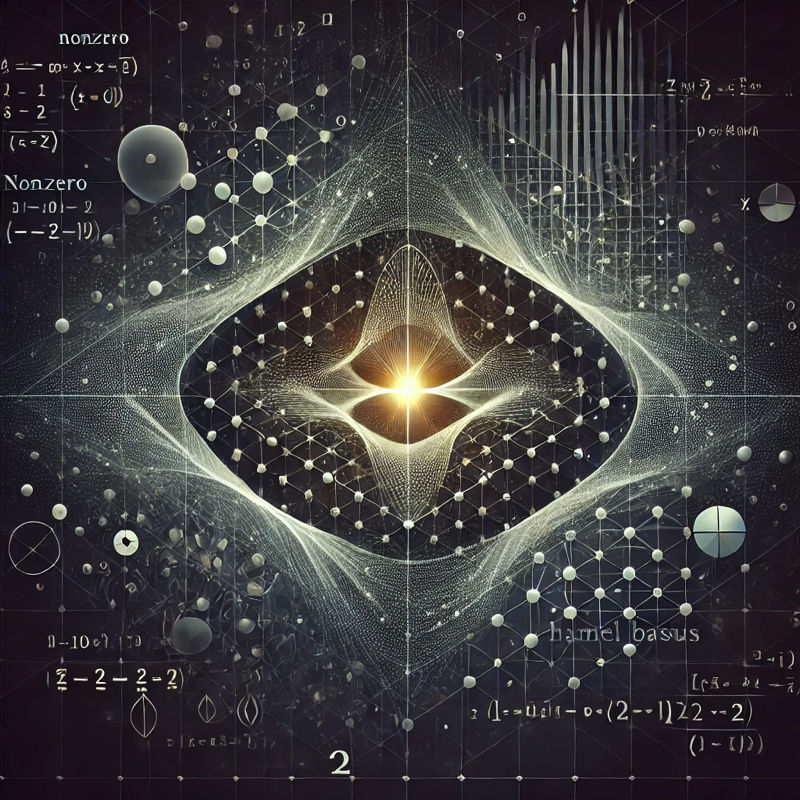
The Cantor Set: A Journey into Mathematical Dust
Imagine a line segment. Now, imagine removing the middle third of it. What’s left are two smaller line segments. What if you were to repeat this process for each of those new segments? And then again for the segments that remain, ad infinitum? What would be left? A collection of points so numerous they can’t be counted, yet so sparse they take up no space at all. This is the paradox and the beauty of the Cantor set, one of the most fascinating and counterintuitive objects in mathematics.
The Construction: An Infinitude of Removals
The construction of the Cantor set, first introduced by German mathematician Georg Cantor in 1883, is a beautiful example of an iterative process. We begin with the closed interval \([0, 1]\). Let’s call this initial set \(C_0\).
Step 1: We remove the open middle third of \(C_0\), which is the interval \((\frac{1}{3}, \frac{2}{3})\). What remains are two closed intervals: \([0, \frac{1}{3}]\) and \([\frac{2}{3}, 1]\). We call the union of these two intervals \(C_1\).
Step 2: Now, we repeat the process for each of the intervals in \(C_1\). We remove the open middle third of \([0, \frac{1}{3}]\), which is \((\frac{1}{9}, \frac{2}{9})\), and the open middle third of \([\frac{2}{3}, 1]\), which is \((\frac{7}{9}, \frac{8}{9})\). This leaves us with four intervals. Their union is \(C_2\).
We continue this process indefinitely. At each step \(n\), we have a set \(C_n\) which is the union of \(2^n\) closed intervals, each of length \((\frac{1}{3})^n\). The Cantor set, denoted by \(C\), is what remains after we have performed this removal process an infinite number of times. Mathematically, it is the intersection of all the sets \(C_n\):
Visually, it looks something like a fine dust of points.
A Ternary Tale: Unveiling the Points Within
A more profound way to understand the Cantor set is through ternary (base-3) expansions. Any number in the interval \([0, 1]\) can be written in base 3 using the digits 0, 1, and 2. For example, \(\frac{1}{3}\) can be written as \(0.1_3\) or, equivalently, \(0.0222…_3\).
When we remove the middle third, \((\frac{1}{3}, \frac{2}{3})\), we are removing all numbers whose ternary expansion must have a 1 in the first decimal place (e.g., \(0.1…_3\)). In the second step, we remove the middle thirds of the remaining intervals, which corresponds to removing numbers that have a 1 in the second decimal place.
Continuing this logic, the Cantor set consists of precisely those numbers in \([0, 1]\) that have a ternary expansion containing only the digits 0 and 2. For instance, \(\frac{1}{4}\) is in the Cantor set because its ternary expansion is \(0.020202…_3\). The number \(\frac{1}{3}\) is also in the set, as it can be written as \(0.0222…_3\).
The Astonishing Properties of the Cantor Set
1. It is Uncountable
This is perhaps the most shocking property. While we’ve removed an infinite number of intervals, the number of points remaining is not just infinite, but uncountably infinite. This means there are as many points in the Cantor set as there are in the entire interval \([0, 1]\)!
The proof is elegant using the ternary representation. Take any point in the Cantor set, written in base 3 with only 0s and 2s. Now, create a new number by replacing all the 2s with 1s. This new number is a binary representation of a number in \([0, 1]\). This establishes a one-to-one correspondence between the Cantor set and the set of all real numbers in \([0, 1]\). Since the set of real numbers in \([0, 1]\) is uncountable, so is the Cantor set.
2. It has Zero Measure (Length)
Here lies the great paradox. Although it contains an uncountably infinite number of points, the “total length” of the Cantor set is zero. We can see this by summing the lengths of the intervals we removed.
In the first step, we removed one interval of length \(\frac{1}{3}\). In the second step, we removed two intervals of length \(\frac{2}{9}\), for a total length of \(\frac{2}{9}\). In the \(n\)-th step, we remove \(2^{n-1}\) intervals of length \((\frac{1}{3})^n\). The total length of the removed intervals is the sum of an infinite geometric series:
Since we started with an interval of length 1 and removed a total length of 1, the measure of the remaining Cantor set is \(1 – 1 = 0\).
3. It is a Fractal
The Cantor set is a classic example of a fractal. It exhibits self-similarity: if you take either the left or right half of the Cantor set and magnify it by a factor of 3, you get back the original Cantor set. This “infinite complexity” at all scales leads to the concept of a fractal dimension.
The Hausdorff dimension, a way of measuring the dimension of fractal objects, for the Cantor set is given by:
This fractional dimension tells us that the Cantor set is something more than a collection of 0-dimensional points, but less than a 1-dimensional line.
Georg Cantor and the Birth of Modern Set Theory
Georg Cantor’s work on the Cantor set was part of his broader, revolutionary research into set theory and the nature of infinity. At the time, his ideas were met with considerable resistance and even ridicule from many of his contemporaries. The notion of different sizes of infinity and objects like the Cantor set were seen as pathological and absurd. However, his work laid the foundation for modern set theory and has become a cornerstone of 20th and 21st-century mathematics.
Why the Cantor Set Matters: Applications
Beyond its role as a fascinating mathematical curiosity, the Cantor set is a vital tool in many areas of mathematics:
- Topology and Analysis: It serves as a powerful counterexample to many intuitive conjectures. For instance, it is a set that is nowhere dense, yet perfect (every point is a limit point).
- Dynamical Systems: It appears in the study of chaotic systems and strange attractors.
- Fractal Geometry: It is a fundamental example used to develop the theory of fractals.
A Universe in a Speck of Dust
The Cantor set is a testament to the fact that in mathematics, things are not always as they seem. It is an object that is simultaneously vast and infinitesimal, a set that challenges our intuitions about space, number, and infinity. It reminds us that even from the simplest of rules, an object of profound complexity and beauty can emerge, a fine dust of points holding a universe of mathematical wonder.
RELATED POSTS
View all



